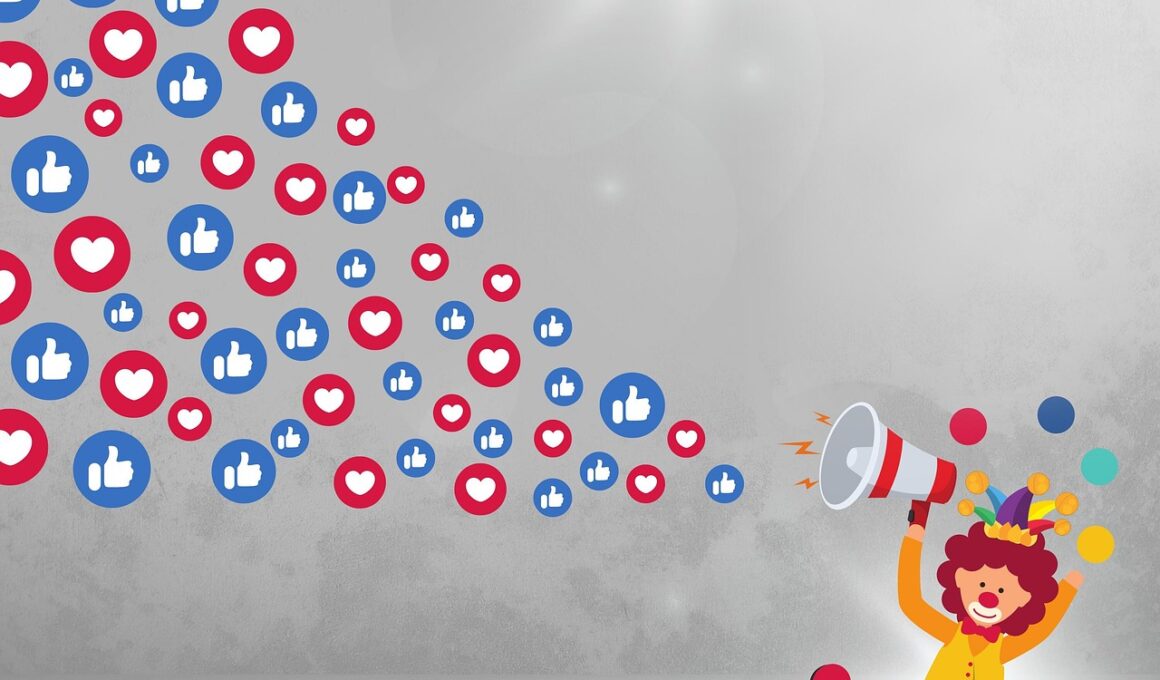Using Analytics to Understand Your Audience Better
Understanding your audience is crucial for micro-influencers aiming to boost audience engagement and campaigns. Analytics offers valuable insights into who your followers are and what resonates with them. By examining various metrics, influencers can gather demographic data that highlights the interests, locations, and behaviors of their audience. With these insights, content can be tailored to better align with what the audience appreciates, leading to more meaningful interaction. Key performance indicators (KPIs) such as engagement rates, reach, and impressions can be monitored using analytics tools. These tools provide a detailed look at which posts perform well and why, enabling influencers to replicate success and avoid common pitfalls. Additionally, understanding peak activity times can help in scheduling content for maximum visibility. A thorough comprehension of audience analytics informs strategy adjustments that help to improve future content creation. Investing time into analyzing performance genuinely pays off by cultivating a dedicated follower base, ultimately enhancing brand loyalty. Micro-influencers should effectively communicate with their audience by leveraging the data provided by analytics tools and platforms.
Another important aspect to monitor is audience engagement. Effective engagement means not only producing high-quality content but also maintaining a respectful and responsive dialogue with followers. Engaging with followers through comments, direct messages, and polls can offer additional insights into audience preferences. For micro-influencers, developing a close relationship with their audience is vital. Regularly asking followers for feedback can help shape content direction and improve the overall effectiveness of their communication strategies. Analytics tools can specify which types of posts foster engagement. For instance, polls and questions typically yield higher interaction rates compared to standard posts. By observing these engagement trends, micro-influencers can identify which topics excite their audience. Another effective approach is to segment the audience based on interests or demographics to tailor content. Personalized content often resonates better with specific audience segments, enhancing connection and trust. Therefore, investing in audience engagement strategies and comprehension is essential for micro-influencers. By connecting and responding thoughtfully, influencers not only gather valuable insights but also cultivate a loyal following who truly connects with their brand.
Leveraging Social Media Analytics Tools
The proper use of social media analytics tools can be a game changer for micro-influencers. There are various platforms available that can streamline the analytics process. Popular analytics tools include Google Analytics, Hootsuite, and Sprout Social. These platforms allow influencers to track performance across multiple social media channels. They help in consistently analyzing audience behavior and understanding how users interact with the posted content. Furthermore, these tools often provide reports that illustrate trends over time, providing deeper insights into shifts in audience preferences. By examining these reports, patterns may be discovered, revealing when and what types of content allure followers the most. This enables micro-influencers to strategically plan content to align with emerging trends. Regularly utilizing analytics tools can enhance short-term and long-term strategies, encouraging ongoing audience growth and retention. It’s crucial for micro-influencers to embrace these tools, utilizing their capabilities for the best outcomes. By adopting a data-driven approach, influencers can truly understand their audience on a deeper level that drives engagement and fosters a more authentic community.
Another critical element is competitor analysis, which is often overlooked yet holds immense value. Understanding what competitors are doing provides insights into industry trends and audience expectations. By keeping an eye on competitors’ content strategies, micro-influencers can identify potential gaps in their approach. Knowing which posts generate buzz and engagement for competitors can offer inspiration for one’s content, ensuring it resonates with the target audience. Additionally, employing competitive tools, such as BuzzSumo and SEMrush, can help micro-influencers analyze competitors’ content strategies in-depth. Trends observed in competitors’ audiences may inform foundational changes to improve effectiveness. For example, influencers can gauge which topics their target audience seems to enjoy, crafting content aligned with those interests. Furthermore, observing how competitors engage with their audience provides fruitful ideas on enhancing your own audience interactions. The culmination of these insights allows micro-influencers to refine their approaches continuously. By studying competitors and applying these findings, one increases the potential for greater engagement and a vibrant community that supports their brand initiatives.
Creating Meaningful Content from Data
Creating content backed by audience analytics ensures relevance and caters to the preferences of followers. The initial step involves analyzing data gathered from previous posts, determining which types of content have achieved high engagement. For instance, if video content receives more favorable responses than static images, it’s wise to emphasize video production in future strategies. Furthermore, influencers should explore which topics resonate most with their audience by weighing engagement metrics such as likes, shares, and comments. By identifying these patterns, each piece of new content can be crafted with precision, geared toward audience interests. Collaborating with relevant brands can also be informed by analytics insights. If data indicates that followers engage with specific types of products, influencers can strategically align partnerships accordingly. Creating meaningful, resonant content not only pays dividends in terms of engagement but also strengthens the influencer’s reputation as an industry expert. Ultimately, embracing a data-driven content development process fosters authentic connections that lead to sustained audience growth and brand loyalty.
Moreover, consistency is central to maximizing the impact of analytics-driven content strategy. Adopting a consistent posting schedule emphasizes the influencer’s commitment to their audience. Analytics tools can indicate optimal posting times, ensuring visibility for new content. Consistently produced quality content builds a sense of anticipation among followers, fostering deeper engagement and connection. Furthermore, maintaining consistency across various social media platforms is crucial in creating a cohesive brand message that audiences appreciate. When followers notice regular patterns, they become more accustomed to engaging with the influencer’s content. By utilizing audience insights to achieve alignment across different platforms, a more effective and recognizable brand identity emerges. Regularly reviewing analytics results will guide micro-influencers to maintain that consistency in a quality-oriented manner, enhancing their overall strategy. Increased engagement and audience loyalty often manifest when influencers focus their efforts on both consistency of posting and content quality. Engaging with followers consistently can lead to meaningful interactions, forming a vibrant and supportive community around the influencer’s brand.
The Future of Influencer Marketing
As micro-influencers continue to navigate the evolving landscape of social media, analytics hold the key to unlocking future opportunities. Audience expectations are continuously changing, making it imperative for influencers to stay ahead by analyzing emerging trends. This dynamic environment demands a keen understanding of audience behavior, preferences, and engagement patterns. Micro-influencers who effectively adapt their strategies according to these insights are more likely to thrive. The capability to pivot quickly and respond to audience feedback enables influencers to foster a more engaged community. Incorporating innovative content formats and exploring new platforms will facilitate deeper audience relationships. Analytics-driven strategies support micro-influencers as they navigate these changes, ensuring they remain relevant. Engaging followers through personalized approaches based on analytics enhances trust, solidifying a loyal fan base. As influencer marketing evolves, data-driven decision making will be essential to achieve growth and maintain audience interest. Micro-influencers should embrace analytics as a vital tool, refining their strategies to adapt and flourish amid rapid changes in the digital landscape.
In conclusion, analytics provide a roadmap for micro-influencers striving to understand their audience better. By leveraging data collected through various analytics tools, influencers can craft targeted, engaging content that resonates with their followers. Understanding and responding to audience preferences promotes deeper relationships, enhancing the community surrounding the influencer brand. The integration of insights gained from competitor analysis further tailors the content strategy, paving the way for effective engagement. Developing a comprehensive, data-informed social media strategy inspires creativity and fuels growth. It allows micro-influencers to navigate their unique challenges while leveraging their strengths to elevate their impact. As they continue refining their content and engagement strategies, influencers are positioned to build stronger connections with their audience, driving sustainable growth and brand loyalty. The need for actionable insights has never been greater, and those who prioritize analytics will emerge as leaders in their industry. Ultimately, the foundation laid by understanding audience needs through analytics will determine the future success of micro-influencers in a fast-paced digital environment.


